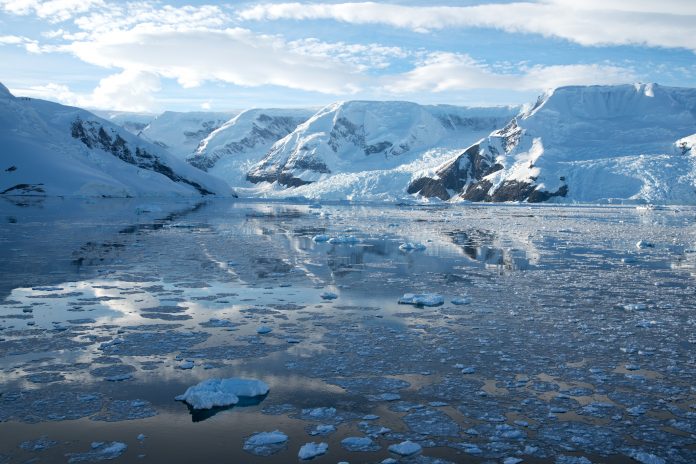A study led by researchers from Indiana University suggests that dispersing particles in the atmosphere to reflect sunlight could mitigate the rapid melting in West Antarctica, lowering the risk of catastrophic sea-level rise
This study, one of the initial examinations of the potential effects of climate engineering on Antarctica, arrives at a critical time as scientists express growing concerns about the heightened probability of accelerated ice loss in West Antarctica in the coming century.
“Even if the world meets the ambitious target of limiting global warming to 1.5 degrees Celsius above pre-industrial levels — which we are not on track to do — we are going to see significant sea-level rise,” said Paul Goddard, an assistant research scientist in the IU College of Arts and Sciences’ Department of Earth and Atmospheric Sciences and the lead author of the study.
“Exploring ways to reflect sunlight into space before it is absorbed into Earth’s climate system could help buy us more time to address climate change and avoid or delay climate tipping points, such as the collapse of the West Antarctic Ice Sheet.”
Changing precipitation patterns
Alongside Goddard, the paper’s co-authors feature IU’s assistant professor in earth and atmospheric sciences, Ben Kravitz; Douglas MacMartin and Daniele Visioni from Cornell University; Ewa Bednarz, affiliated with the National Oceanic and Atmospheric Administration; and Walker Lee from the National Center for Atmospheric Research.
The research delved into climate engineering, specifically investigating stratospheric aerosol injection. This technique involves the release of substantial quantities of minuscule sulfur droplets into the stratosphere, proposed as a means to regulate global temperatures.
Climate cooling
The method emulates the impact of a large volcanic eruption, releasing substantial particles into the upper atmosphere, resulting in a prolonged cooling effect. This approach, discussed in a recent White House report, mirrors the cooling effects of marine cloud brightening, offering potential strategies for planetary cooling.
Over the last 14 years, ten of the hottest on record, including 2023, have contributed to unprecedented heatwaves, wildfires, and climate-related incidents worldwide. The IU study utilised advanced computers and global climate models to simulate various stratospheric aerosol injection scenarios.
Insights into climate intervention
Their analysis, partly conducted on IU’s high-performance computer cluster, Carbonate, aimed to identify the most effective cooling strategy to slow Antarctic ice loss.
“Where you release the aerosols matters a lot and can affect the climate differently,”
Goddard said. “In this case, we found that releasing stratospheric aerosols at multiple latitudes within the tropics and sub-tropics, with a greater proportion in the Southern Hemisphere, is the best strategy for preserving land ice in Antarctica because it helps keep warm ocean waters away from the ice shelves.”
Researchers simulated 11 stratospheric aerosol injection scenarios, including three across various latitudes, which are considered a likely implementation method. These scenarios aimed at temperature targets above pre-industrial levels. Simulations ran from 2035 to 2070, comparing them to a scenario without aerosol injection.
Need for solutions
While multi-latitude aerosol injection showed potential benefits in curbing Antarctic ice loss, further research is essential to precisely measure changes in melt rates, according to Goddard. Some single-latitude injection scenarios actually worsened Antarctic ice loss due to a shift in prevailing winds drawing warm ocean waters toward the ice shelves.
Stratospheric aerosol injection poses risks such as altering regional precipitation patterns and the potential for a termination shock, a swift return of global temperatures to pre-injection levels if the treatment is abruptly halted.
This study contributes to the growing understanding of intentionally cooling the planet, a concept gaining traction amid escalating climate change effects, as highlighted by Kravitz.











